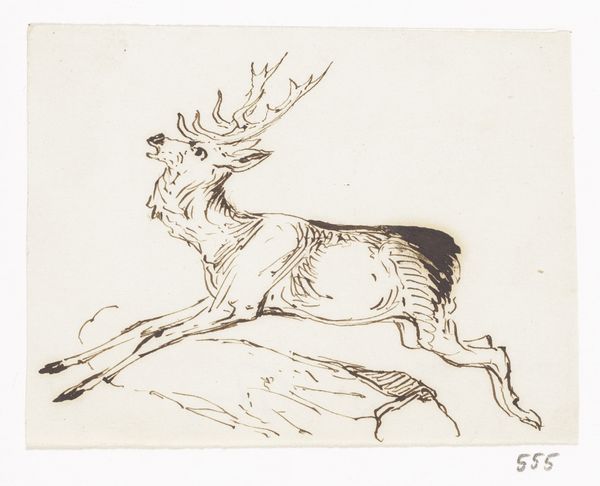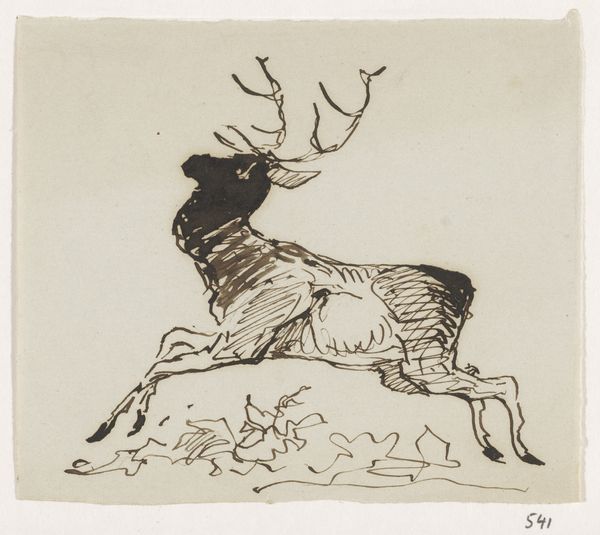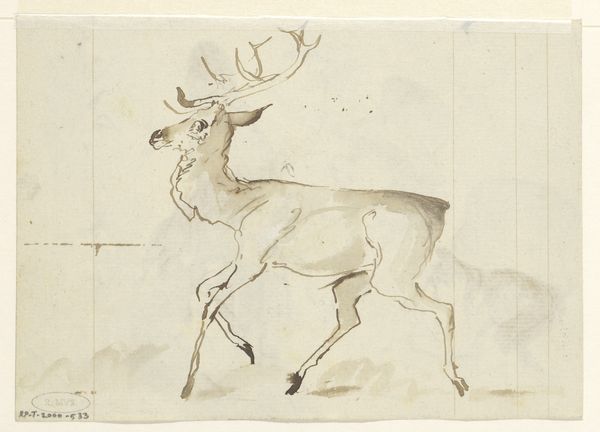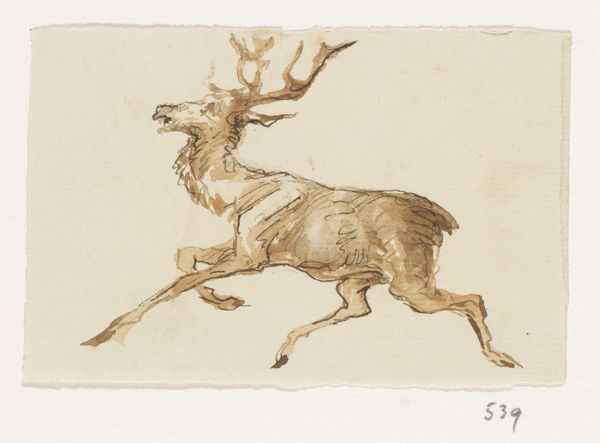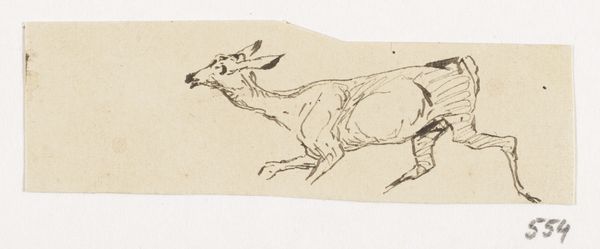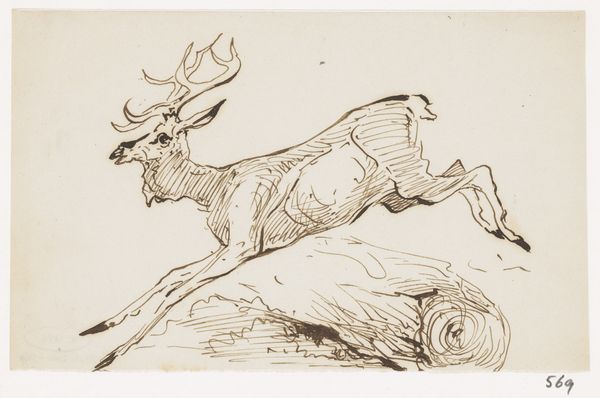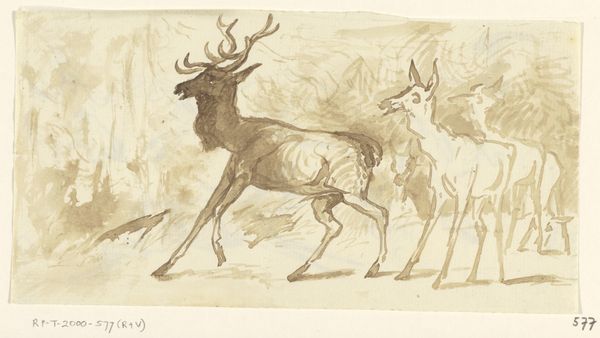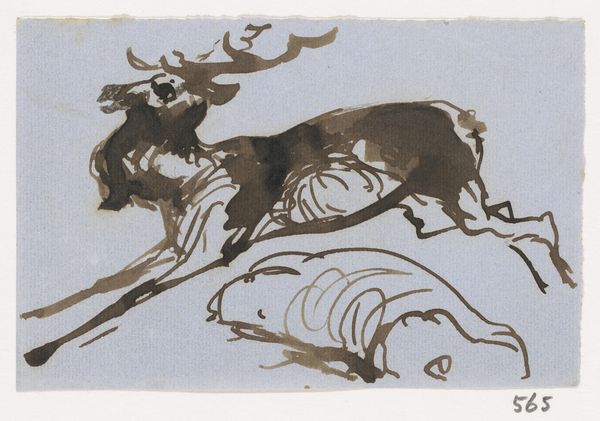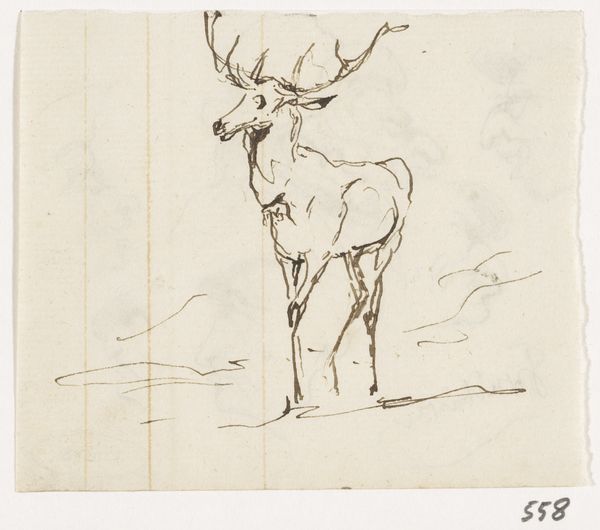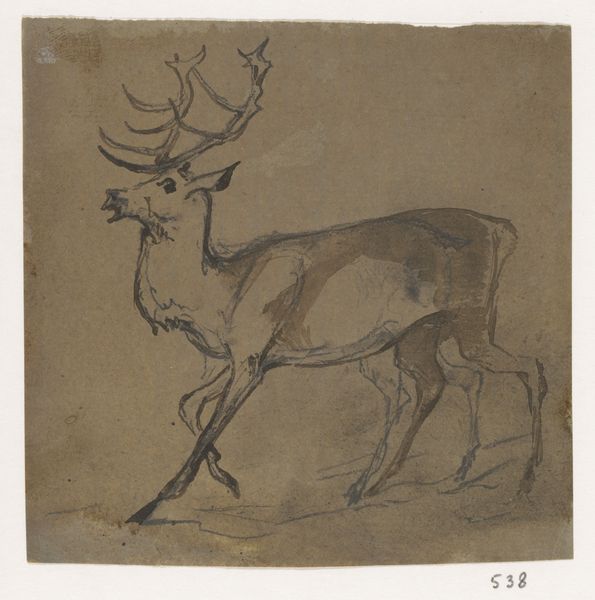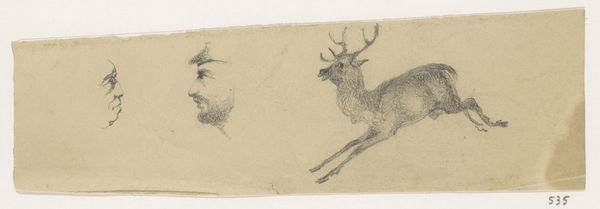
Dimensions: height 34 mm, width 53 mm
Copyright: Rijks Museum: Open Domain
Curator: The striking sketch before us, aptly named "Hert," which is Dutch for deer, hails from the mid-19th century, sometime between 1840 and 1880. Its creator, Johannes Tavenraat, rendered it with ink and what appears to be a light pencil work on toned paper. It's held in the collection of the Rijksmuseum. Editor: It’s immediately captivating; a study in stark, expressive lines. There's a sense of raw energy; it feels like a captured moment, almost as if Tavenraat dashed this down while observing a real animal in the wild. The deer's pose… slightly hunched, head raised... gives the impression of alertness. Curator: Indeed. The loose lines contribute to the work’s immediacy. Given the era and the visible themes of nature, the drawing is best seen through the lens of Romanticism. Artists of that period were fascinated with the animal world, frequently portraying them with an idealization of raw, untamed spirit and emotional weight. What draws my attention particularly, is Tavenraat's economical rendering of the deer; in some ways this is no different than the cave paintings that render only the lines for the wild creatures. Editor: I find the minimalism compelling in this context. Tavenraat isn’t attempting anatomical precision but to get to a deeper, more emotional truth of this animal in its environment. Also it appears this work may have been included in a personal sketchbook; that in and of itself opens new avenues for us to perceive what role art like this played in the every day life of creatives. Curator: It makes me think about our modern perceptions of wilderness. Even this simple image triggers memories of hunting rituals from various historical periods. We often perceive nature through the filter of cultural narratives we were exposed to. In these periods a simple ink drawing such as this can give form to larger political considerations about humanity’s dominion. Editor: That is an excellent point. This is much more than simply depicting the contours of an animal; the politics of image-making in the 19th century involved an assertion of power, claiming visual territory both figuratively and literally. The animal itself can be perceived as a projection. What do we *think* a deer is in popular consciousness; is it gentle? Frightening? How might this reflect Dutch sentiments in particular, which were a crucial power in the region? Curator: I agree, viewing the image with these concerns offers fresh insights into understanding how we look at ourselves as well. Editor: Absolutely, seeing these pieces offers invaluable cultural continuity.
Comments
No comments
Be the first to comment and join the conversation on the ultimate creative platform.
